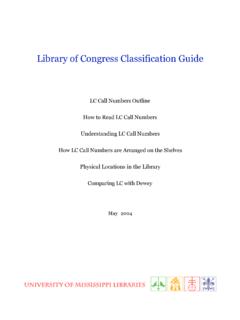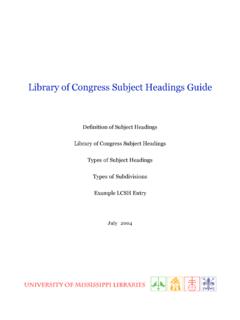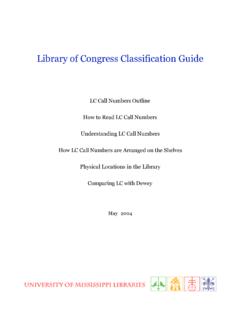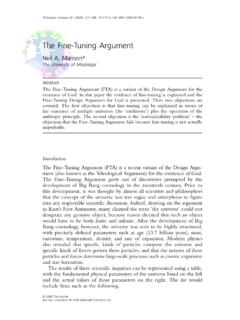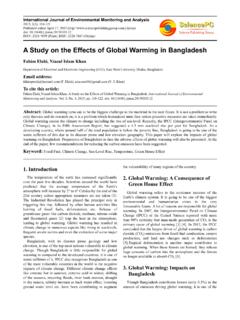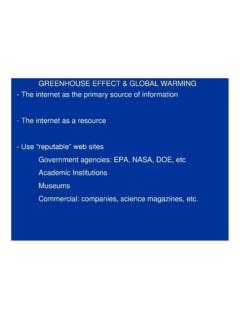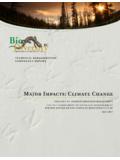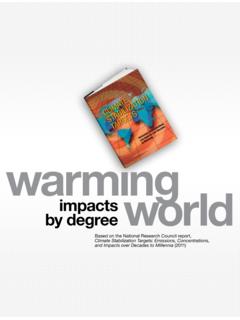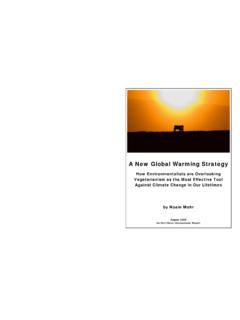Transcription of GLOBAL WARMING – CAUSES, IMPACTS AND …
1 GLOBAL WARMING causes , IMPACTS AND SOLUTIONSCLIMATE CHANGE LAWFEBRUARY 10, 2009 Current State of Law on CliChClimate Change As of today there exists no permanent bodyAs of today, there exists no permanent body of law in the United States governing society s long-term responses to climate changechange. Following the November 2008 elections, momentum seems to be building to movemomentum seems to be building to move law in the direction of regulating greenhouse gas (GHG) emissions in some fashionfashion. However, far too much uncertainty exists to predict where the law in this area will Change Legislation in 2009?
2 Climate Change Legislation in 2009? Proposals attributed to Obama Administration:Eidtildtd Economy-wide national cap-and-tradeprogram to reduce GHG emissions below 1990 levels by 2050 (market based approach)(pp) (Similar proposal the Lieberman-Warner Climate Security Act derailed in June 2008) A carbon tax imposed on a per unit measurement of emissions (market based approach)approach) (Obama s choice of former Clinton EPA Administrator Carol Browner as energy czar has fueled this idea)Climate Change Legislation in 2009?
3 Climate Change Legislation in 2009? Proposals attributed to ObamaProposals attributed to Obama Administration:Amend the Clean Air Act to give EPA Amend the Clean Air Act to give EPA authority to directly regulate GHG emissions (command-and-controlemissions (commandandcontrol approach) Direct the EPA to regulate GHG emissions Direct the EPA to regulate GHG emissions under the existing Clean Air Act (through an administrative endangerment finding)an administrative endangerment finding)Climate Change Legislation in 2009?Climate Change Legislation in 2009?
4 Obstacles to enactment of climateObstacles to enactment of climate change legislation in 2009: Economic turmoil/prolonged recessionpg Concerns include increases in energy prices in a period where energy prices are already volatile Tens of billions of dollars in new compliance costs Tens of billions of dollars in new compliance costs at a time companies are struggling to survive Hundreds of thousands of job losses at a time that unemployment is already rising Democrats do not have 60 votes in the SenateSenateClimate Change Legislation in 2009?
5 Climate Change Legislation in 2009? Obstacles to enactment of climateObstacles to enactment of climate change legislation in 2009:Pressure to wait on outcome of United Pressure to wait on outcome of United Nation s Copenhagen climate conference (summer 2009) to negotiate a new ()ginternational framework (to be agreed to in December 2009) to replace the Kyoto protocol in 2012 (Obama Administration has pledged to re-engage the U S in these negotiations)the in these negotiations)Regulating GHGs Under the Ei i ClAi AExisting Clean Air Act Two potential areas under which GHGsTwo potential areas under which GHGs might be regulated under the existing Clean Air Act (CAA):Clean Air Act (CAA): Title Iand Title V(I NAAQS/ SIPs; V permit program for major stationary permit program for major stationary sources of air pollutants)Titl II(bilt liil Title II(mobile source controls.)
6 Primarily motor vehicles)Regulating GHGs Under the Ei i ClAi AExisting Clean Air Act CAA 108, 109 Requires EPA to establish nationally uniform ambient air quality standards (NAAQS)for air pollutants satisfying the criteria identified in 108 and thus are reasonably ti it d tdbli hlthlfanticipated to endanger public health or welfare. These pollutants are referred to as criteria pollutants. CAA 109(b)(1) authorizes the EPA to establish national ambient air quality standards the attainment and maintenance of which in the judgment of the Administrator, based on [the] criteria [established under 108] and allowing an adequate margin of safety, are requisite to protect the bli hlth public health.
7 Regulating GHGs Under the Ei i ClAi AExisting Clean Air Act NAAQS have been issued for six criteria NAAQS have been issued for six criteria pollutants: Sulfur dioxide (SO2)Sulfur dioxide (SO2) Nitrogen oxide (NOX) Carbon monoxide (CO)Carbon monoxide (CO) Particulate matter (soot, fly ash, and similar matter) Ozone LeadMassachusetts v EPA(U S 2007)Massachusetts v. EPA( 2007) CAA Title II Section 202(a)(1): The EPA shall prescribe standards applicable to the emission of any air pollutant from any class or classes of new motor vehicles.
8 Which in [its] judgment cause, or contribute to, air pollution which bl bti it d tmay reasonably be anticipated to endanger public health or Massachusetts v EPA(U S 2007)Massachusetts v. EPA( 2007) Precautionary Standard:Precautionary Standard: The Clean Air Act and common sense demand regulatory action to demand regulatory action to prevent harm, even if the regulator is less than certain that harm is otherwisecertain that harm is otherwise inevitable. Ethyl Corp v EPA541 F 2d 1 25 Ethyl Corp v. EPA, 541 1, 25 ( Cir.)
9 1976) (en banc)Massachusetts v EPA(U S 2007)Massachusetts v. EPA( 2007)Ai P ll tt Air Pollutant: CAA 302(g) The term `air pollutant means any air pollution agent or combination of such agents, including any physical, chemical, biological, radioactive .. substance or matter which is emitted into or otherwise enters the ambient air. Massachusetts v EPA(U S 2007)Massachusetts v. EPA( 2007) Welfare:Welfare: CAA 302(h) All language referring toeffects on welfareincludes but isto effects on welfareincludes, but is not limited to, effects on soils, water, crops vegetation manmade materialscrops, vegetation, man-made materials, animals, wildlife, weather, visibility, and climatedamage to and deterioration ofclimate.
10 Damage to and deterioration of EPA Rationale for Not Regulating GHG U dCAA 202 GHG Under CAA 202 GHGs do not qualify as air pollutants under statute Congress declined to adopt a proposed amendment to the CAA establishing binding GHG emissions limitations in 1990 CAA was designed to address localair pollutants rather than substances that concentrate in the world atmospheref EPA regulations of carbon dioxide would either conflict with mandatory fuel economy (tailpipe emissions) standards (regulated by DOT) or be superfluoussuperfluous In sum, if Congress had intended the EPA to regulate on such an important and politicized issue, it would have said so in so many wordshave said so in so many wordsEPA Rationale for Not Regulating GHG U dCAA 202 GHG Under CAA 202 Even if it had authority over GHGs, EPA would yexercise discretion not to exercise such authority.


